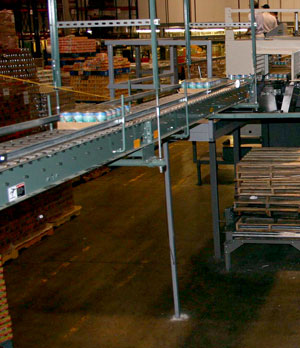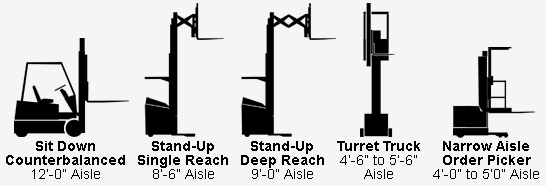The Final Frontier – Using Space Efficiently
Go boldly into getting the most out of your warehouse

In a recent article released by the Wall Street Journal, warehouse space was showcased as being at its tightest since 2000. While this should come as no surprise that this issue of space is consistently growing, the rate at which warehouse vacancy is dwindling is far outpacing the increase in new construction. In the second quarter of 2018 alone, industrial real estate availability fell to 7.2%. This creates in a unique predicament for those thriving and looking towards expansion, but also provides opportunities for those who can maximize their available footprint.
Re-imagining available space is now looking to be an important aspect of growth and productivity for those facilities that are looking for an efficient way to increase operations. If you’re looking to expand you’re existing area, what are your options?
Bending space to expand your business
To create a flexible, space-efficient operation that lets you adapt to changing needs and customer demands, you must look at the various ways you can enhance your existing warehouse infrastructure.
Consider these avenues:

Go farther with a mezzanine
Compared to the cost of a new building, industrial platforms are a bargain. They don’t consume new utilities, don’t require facility expansion, and they are much easier to code in terms of local regulations.
Properly designed mezzanines can be used for anything from bulk storage areas, to process areas, to value-added service areas (VAS), extending the lifespan of an existing location for years by offering improved space utilization. The idea is to double stack space in a critical area, such as a high-density order picking function where many pick slots are condensed into a relatively small footprint. You can also place offices, processing areas and other functions on mezzanines. Accessibility is relatively easy through spiral conveyors, VRCs (vertical lifts), incline conveyors, etc.

Assimilate your vertical storage opportunities
Empty vertical space are prime areas for increased expansion and storage through elevated rack height. By taking advantage of what’s overhead, you can see significant results in your warehouse storage. Wasting a bay or two above the top level of your rack can add scores or hundreds of pallet positions to your facility.
You can also look at higher-density solutions compared to static storage, such as carton flow racks that pack multiple SKUs into lanes. This was done at our client, Educational Development Corporation’s distribution facility to great effect, allowing many picks to be made in tight spaces.
Conveyors can be suspended from the ceiling to free up floor space. This was done at another of our clients, Simmons Pet Foods, and many other places.
Reduce rack aisle widths to recoup space

Reducing aisle widths (if possible) is another avenue to help to increase storage density in your facility. Aisle width decisions must strive to achieve the best combination of productivity, flexibility, safety, and equipment costs for the specific application, but if done correctly can yield additional warehouse storage and possibly save your process time as well. Typical forklifts require 12 feet, but if your situation allows narrower lanes across an entire facility, you can claim that extra space.
More information: see Cisco-Eagle’s Guide to Forklift Aisle Widths
Find the right vessel
Ignoring the conventional wisdom that one size fits all when it comes to storage containers, could provide you with an undiscovered country of new space. With many container options, from plastic to wire, at your disposal, you can mix and match towards a more efficient and space-saving situation. These containers come in a variety of sizes from small bins to full pallet, and may help you organize your facility to regain needed working area.
The search for shelving
Identifying the right shelving for your varied inventory can help increase items that can reside on existing shelves and add more areas for new storage. For bulk loads you might select rivet style shelving, which has very high capacities and is easier to assemble, reassemble, move and reconfigure. Steel shelving is better for bin storage, can be tilted and fitted with more types of dividers and options. Rotary shelving has the ability to concentrate storage of bulk items into less space, while housing many different kinds of items on the same shelf. Here are some guides to the types of shelving that can help you understand the differences:
- A Guide to Shelving Types and Specifications
- Rotary Shelving can save you space and time
- All Things Shelving
The undiscovered country : redesign for space saving
To truly maximize efficiency of existing space and increase storage capacity for your location, the warehouse redesign process can yield very positive results. While the most intense avenue to increase your warehouse storage, taking a step back and looking at the big picture within your structure can help showcase multiple areas in need of solutions.
More resources
We can help you optimize the size and design of your facility for better organization and high-density, secure storage.
- Cisco-Eagle guide to Mezzanines
- Smarter Space in the E-Commerce Landscape
- OSHA Safety Standards for Mezzanines & Platforms
Tags: Warehouse Management, warehousing, space savings, storage, warehouse, warehouse productivity
Evan Fleishacker




